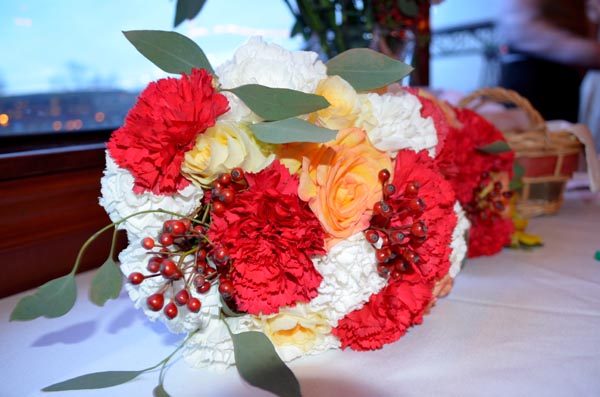
Bridal bouquet with red and white carnations, cream and pale orange roses, tiny rose hips and seeded eucalyptus. The bride’s bouquet was larger had more cream and white than other arrangements to make it a bit more special.
There was a short turn around to the big day and some kinks to work out in the plan. First off, late November is a seasonally confused time. People are hanging up holiday lights and dreaming of snow, but the winter solstice doesn’t happen until December 21st. We decided to blend the two seasons – keeping it more fall/harvest oriented with a touch of winter.
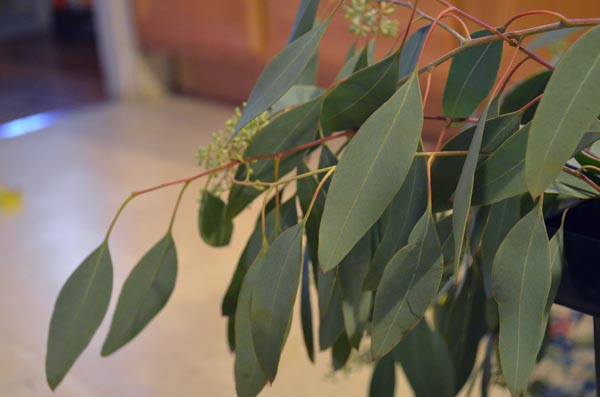
Seeded eucalyptus has great blue-green foliage that hangs a bit. We wove it through the arrangements.
Another challenge was the limited list of seasonally available flowers. You can always have tulips flown in from Australian, but that’s not quite our style. Luckily, every florist always has access to the old standbys: roses, carnations, and popular filler flowers. Those also come in a wide range of colors, which made them a natural choice for our plant palette (not to mention my mom adores carnations). Here’s the breakdown:
- Roses: cream, red and yellow with orange edges
- Carnations: white, red, yellow with orange edges
- Astromeria (good filler flower): red, yellow, orange, white
- Seeded eucalyptus: green-blue foliage
- Rose hips: tiny ones
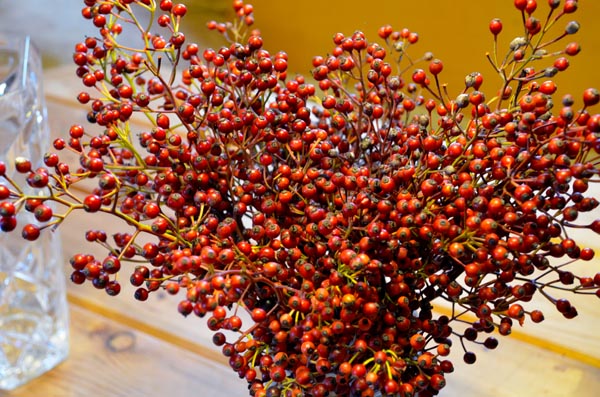
Tiny rose hips, about 1/4″ in size, for a nod to fall
Typically only florists have direct access to the wholesale flower market. My advice is to pick a local flower supplier who consistently has great quality blooms. In this case, I talked to the flower gal at New Seasons and she helped me put together a bulk flower order. They also gave me 10% off, since the order total was over $200 bucks. I placed the order a week in advance and picked up over $500 of flowers about four days before the wedding.
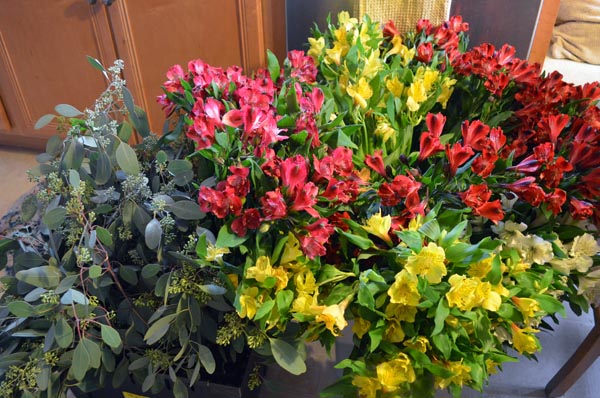
Half of the bulk flower order: eucalyptus and tons of astromeria
Why four days early? I wanted to give the flowers time to open up. You can prevent them from opening if you keep them cool, like in the fridge, but I let all of them hang out in the kitchen for a couple days to get really full. If ones seemed to be getting too full, I moved them to the chilly basement.
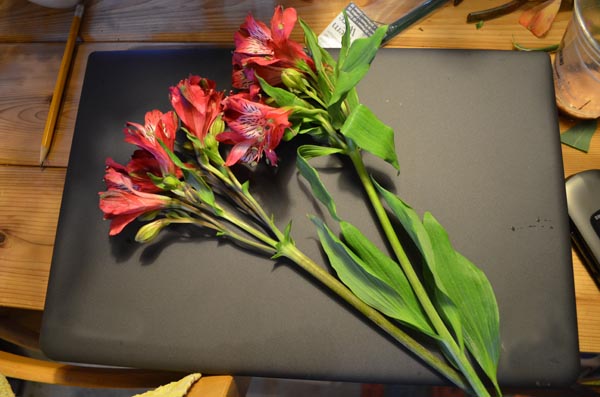
Processing the bulk flowers involves stripping thorns and foliage. The stem on the left has been processed – no leaves left below the blooms – while the one on the right has not been processed
I had to “process” the flowers the day I brought them home. That meant filling up buckets of fresh, cold water for them to drink. I made fresh cuts at the base of all the stems and stripped off all leaves below the flower heads. I also de-thorned the roses, which is typically not done for you when you buy in bulk. They come packed and wrapped really tight from the market, so I gave them all enough wiggle room to open up nice and wide.
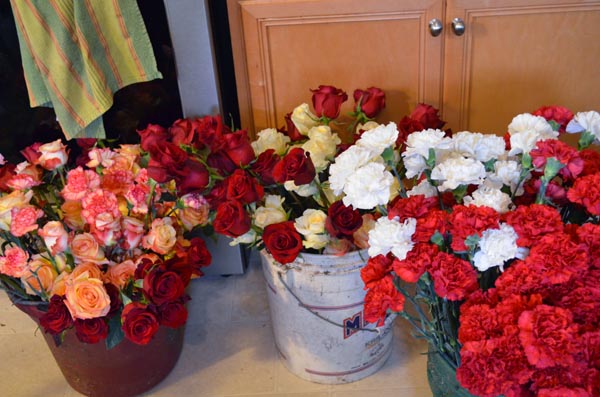
Stars of the show – roses and carnations – sitting in buckets opening up their flower heads
Assembling the arrangements was a synch, but time consuming. My sister came over with me the day before the wedding and we put everything together from about 10am-5pm. We worked our way through a few bouquets, boutonnieres, corsages and lots of centerpieces. There were about 16 centerpieces to be exact – two for each table, since the tables were long and narrow.
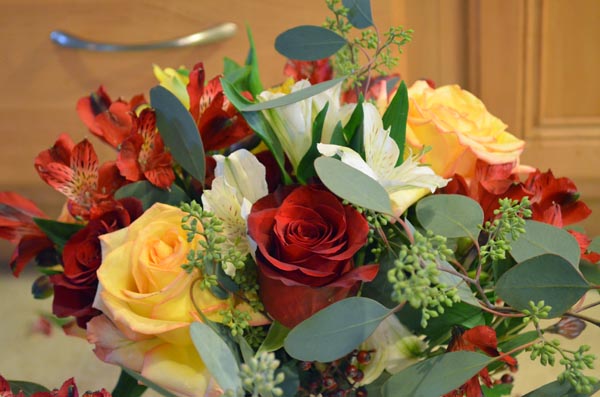
Centerpiece A: red, cream and pale orange roses with red and white astromeria, eucalyptus and rose hips
We kept it simple by using quart jars for vases, which makes it easy for folks to take them home after the reception. My sister put together half of the centerpieces with roses, astromeria, seeded eucalyptus and tiny rose hips.
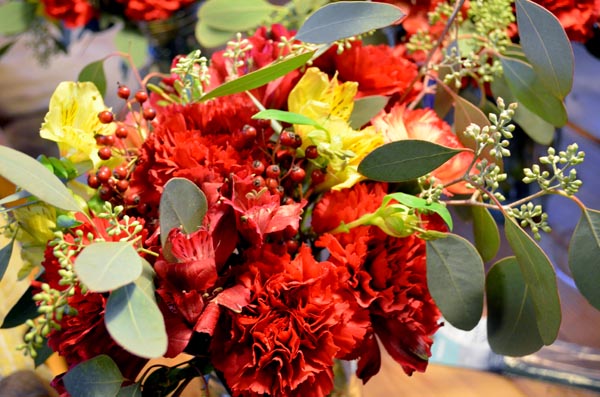
Centerpiece B: red carnations with red and yellow astromeria, eucalyptus and rose hips
I did the other half using carnations instead of roses. With us splitting them up like that, there was good consistency between the two types of arrangements. Having two smaller arrangements on each of these long tables made it still feel full of color without preventing guests from being able to see each other to visit. (Drives me nuts to be at weddings where you have to bend around the flowers to talk to folks at your table…)
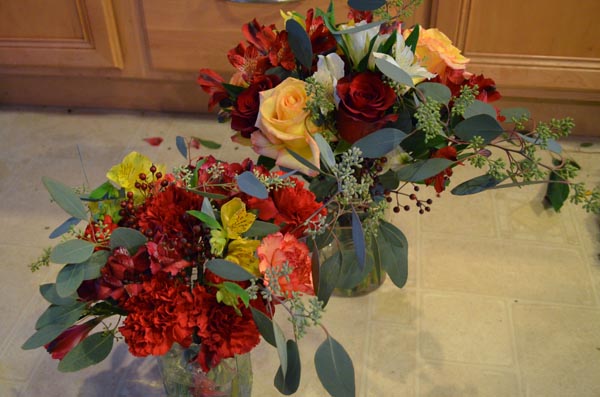
The two centerpieces sitting side by side
I overbought a bit, as it’s always good to have insurance. If you mess up a boutonniere or pop the top off a prized rose, it takes the pressure off when you have some spares. We made tiny arrangements in little half pint jars with these guys, placing them on the small tables in the bar area. They were mostly combinations of white carnations, pale orange roses with springs of eucalyptus. I think that would be a stunning winter wedding flower combination – so romantic.
We stored the finished bouts and corsages in the fridge to keep them preserved, but let everything else stay out overnight to open up even more.
All in all, it was a huge success. My sister and I spent some much needed quality time together. My mom was happy, which is the most important thing. And I got an excuse to spend time blending my love of plants with my love for design. That adds up to a pretty successful DIY wedding flower experience.
You can find more details on putting together wedding flowers at the following links, which helped guide me through the simple process of making the boutonnieres, bouquets and corsages. The last link is a post of mine from a few years back when I did flowers for a friend’s early spring wedding.
- DIY Wedding Flowers: Homemade Boutonnieres
- Homemade Wedding Bouquets: The Basics
- Early Spring DIY Wedding Flowers
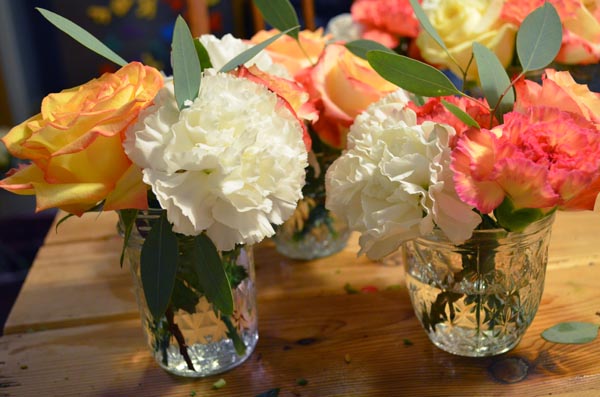
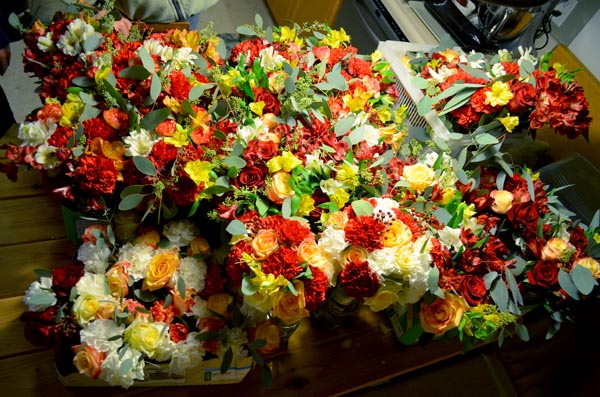
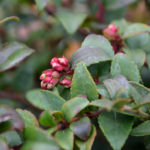
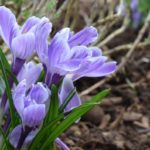
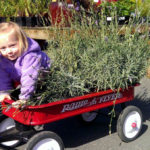
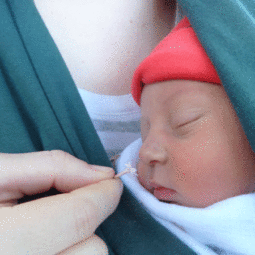
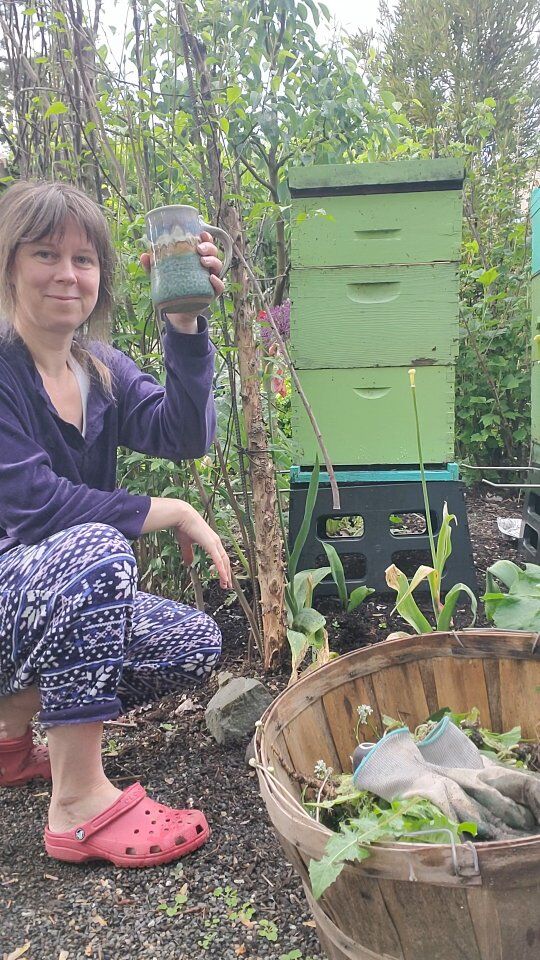

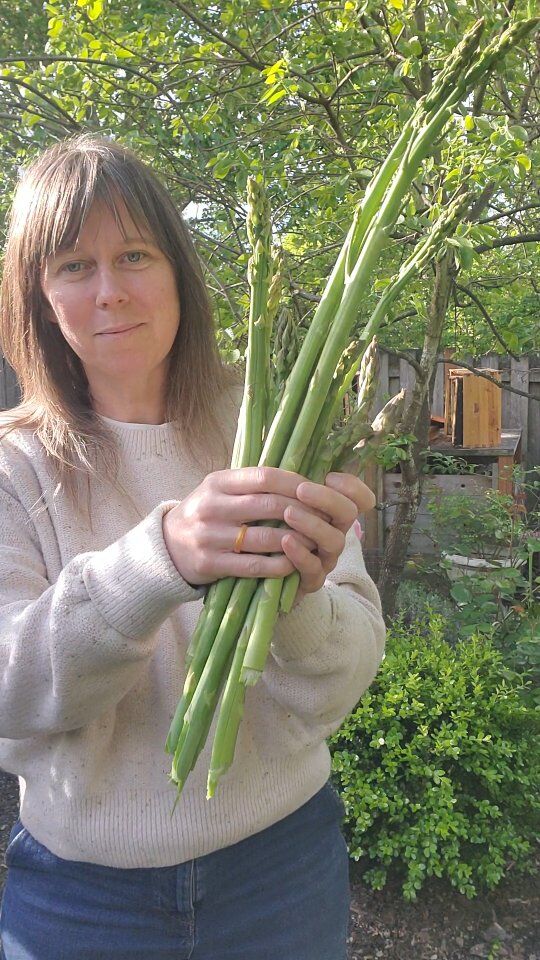
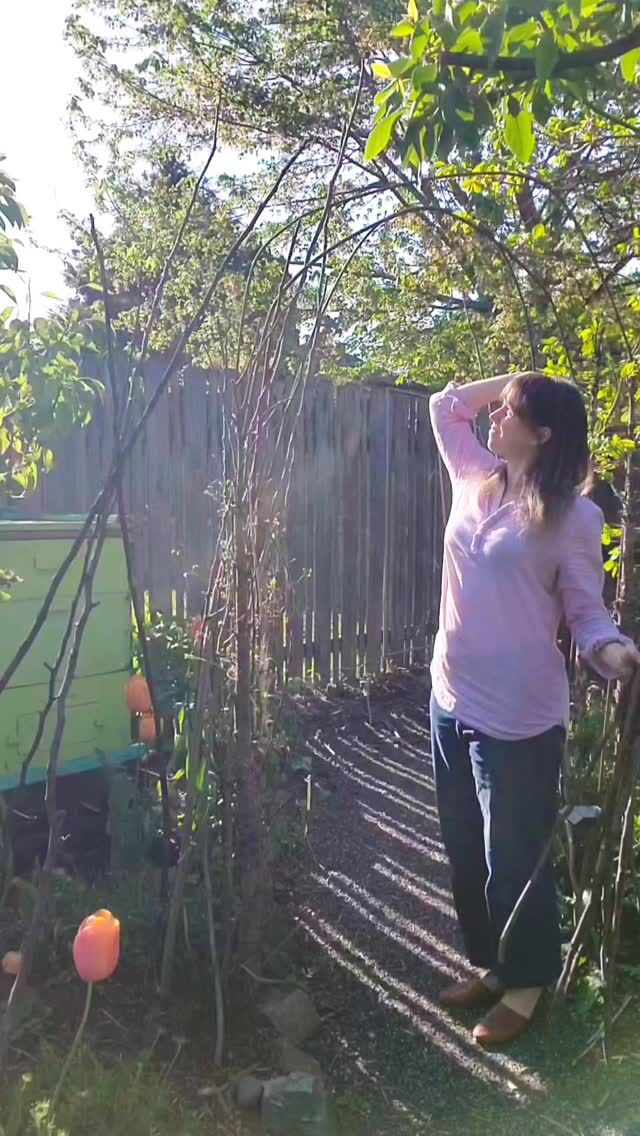
 I start with a
I start with a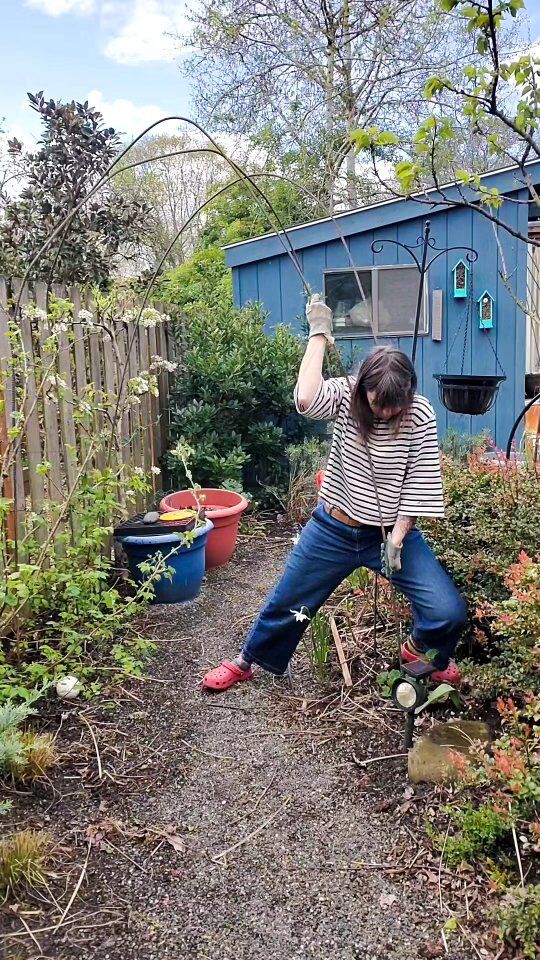
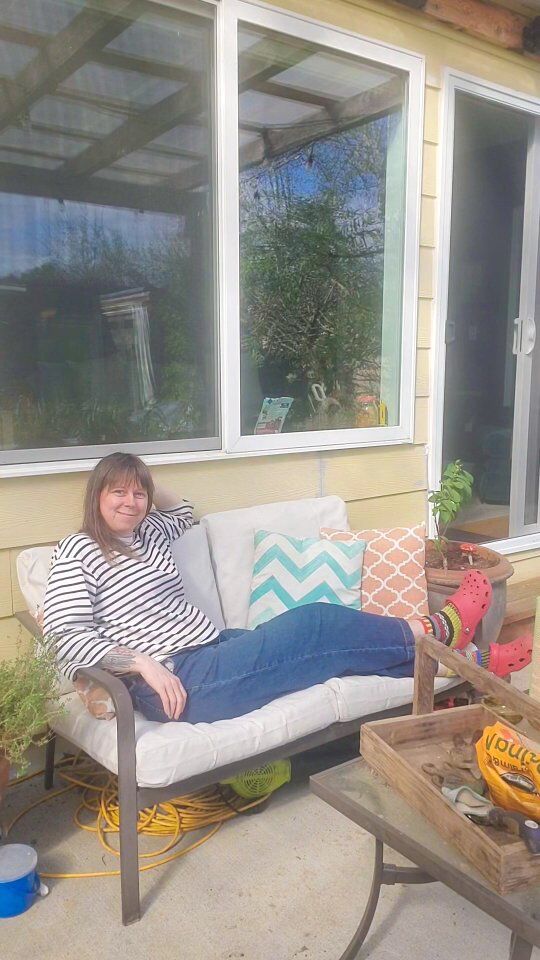
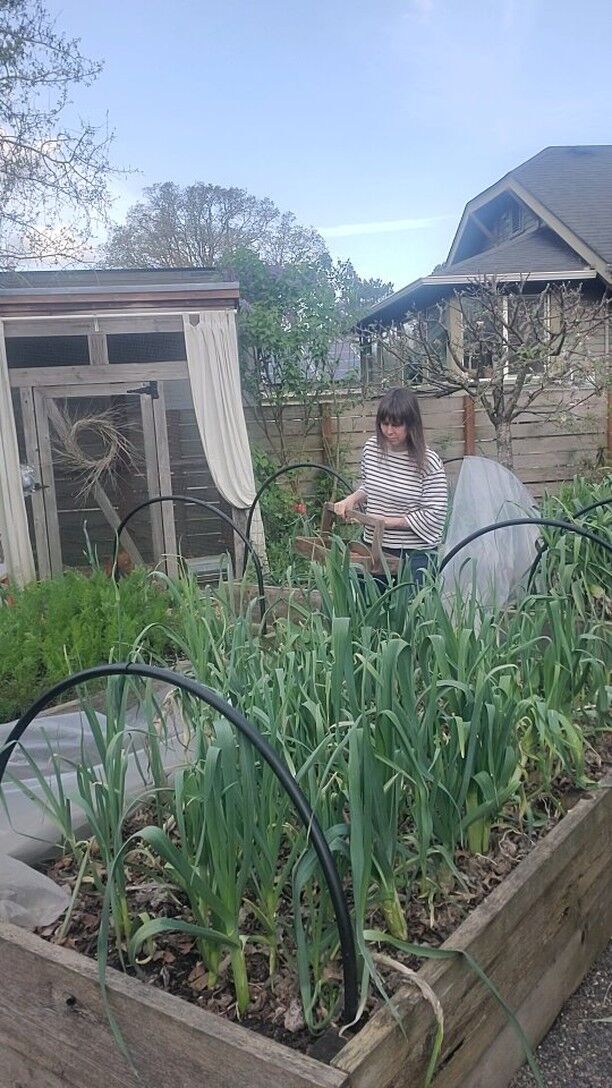
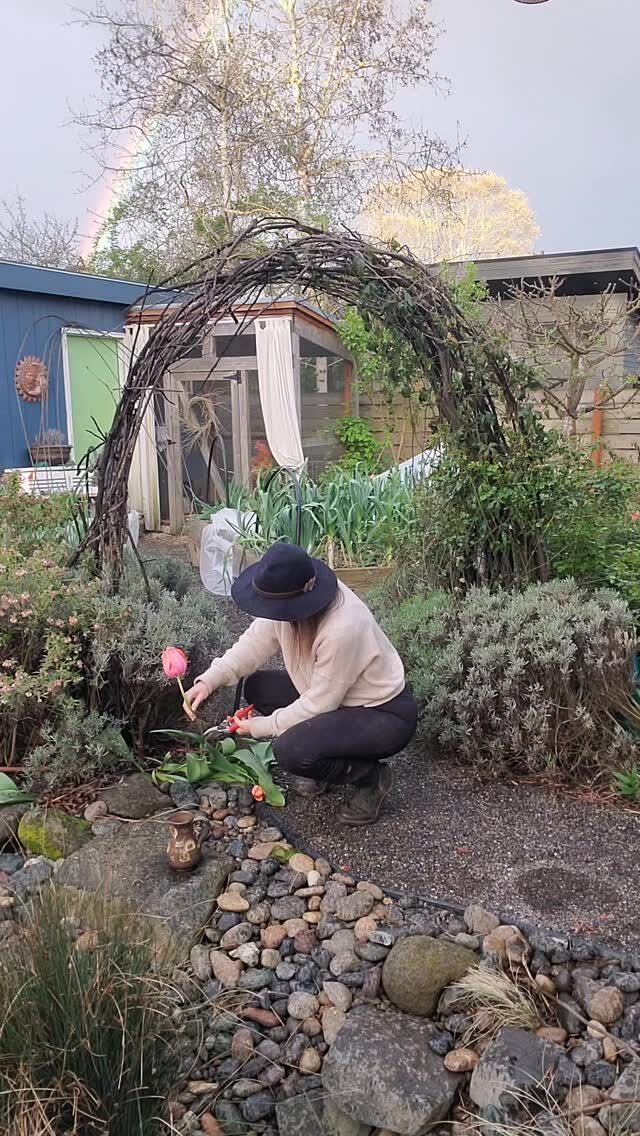
 There's a go
There's a go
My brother got married in a “rustic chic” wedding outdoors in early November. The mother of the groom, mother of the bride, the bride, and I spent the day before the wedding putting together the boys boutonnieres out of hayseed heads, lavender sprigs, and pieces of rosemary from the bush in mom’s front yard. They were not only beautiful but smelled good, without being too “girly.”
The flowers are lovely! i really appreciate flowers in weddings. They are always beautifully designed. I guess it takes a lot of creativity and patience to be able to come up with beautiful designs. Knowing what to choose and knowing how to blend all those lovely flowers.